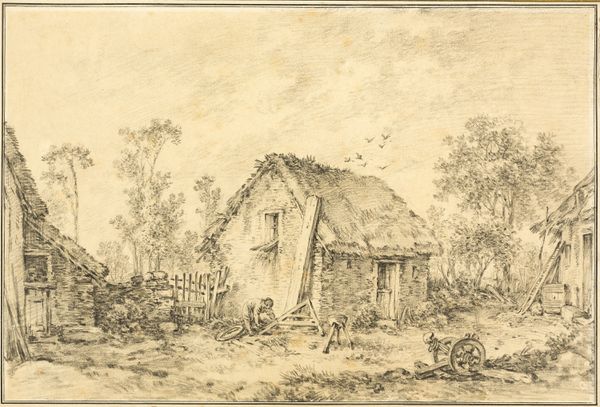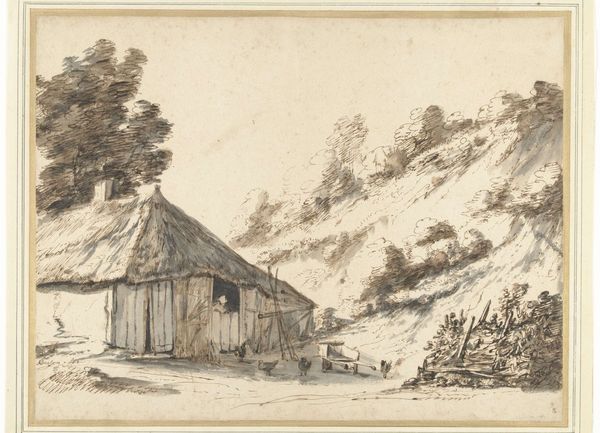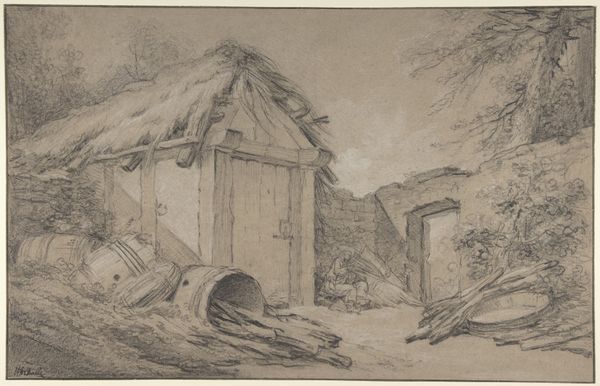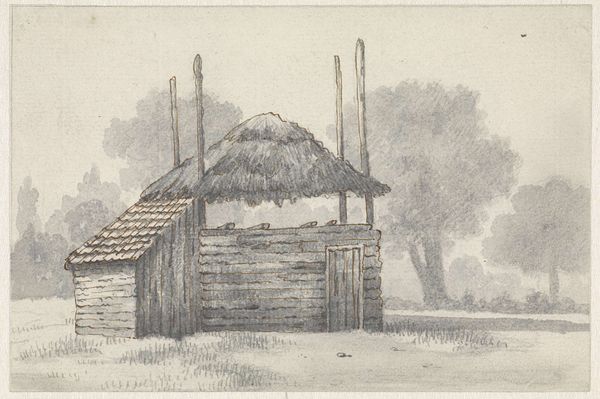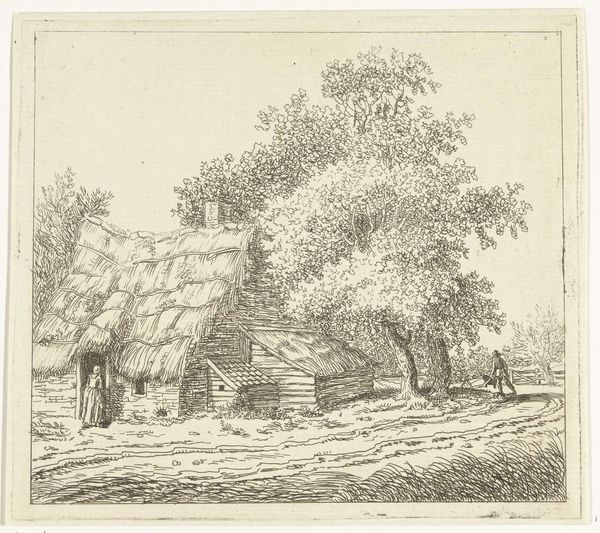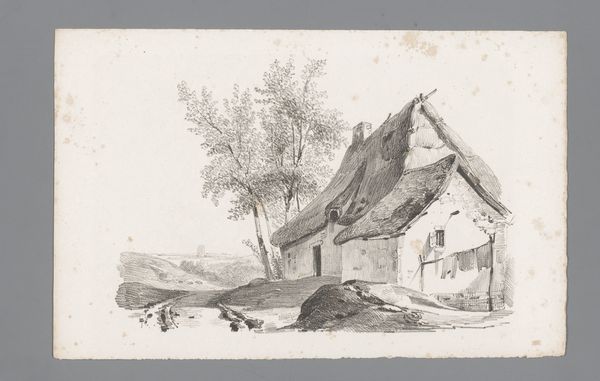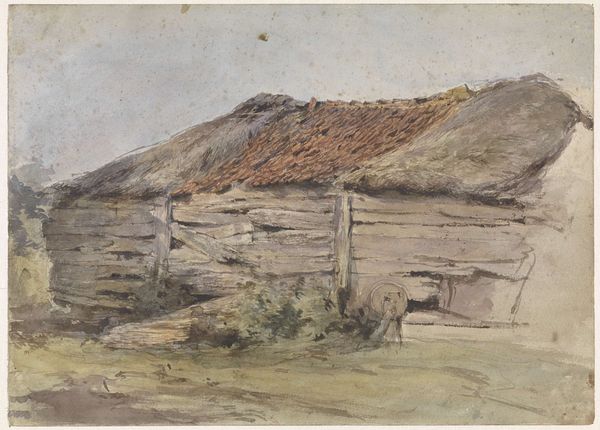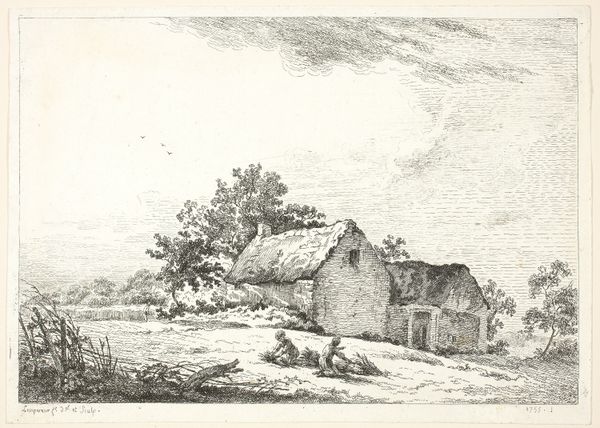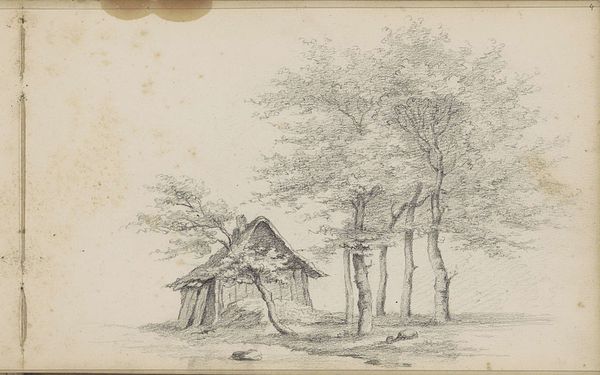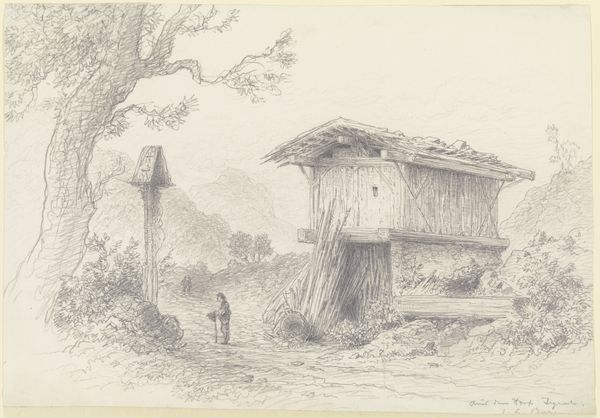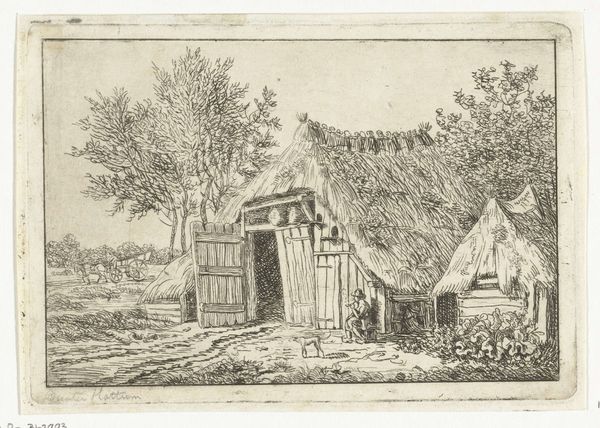
drawing, watercolor, pencil
#
drawing
#
pencil sketch
#
landscape
#
watercolor
#
romanticism
#
pencil
#
watercolour illustration
#
genre-painting
#
watercolor
Dimensions: height 144 mm, width 192 mm
Copyright: Rijks Museum: Open Domain
Curator: This quiet scene before us is titled "Twee hokken voor vee," or "Two Sheds for Cattle," by Cornelis Steffelaar. Created sometime between 1807 and 1861, it's rendered with delicate strokes of pencil and watercolor. Editor: The weathered surfaces and gentle palette create a somber, contemplative mood. I'm struck by the contrast between the carefully rendered details of the sheds and the looser treatment of the surrounding landscape. Curator: Note how Steffelaar uses humble sheds as his primary subject matter, elevating them to a place of quiet importance. Sheds often represent shelter and provision. We find a visual harmony in simple living and utility. Editor: Absolutely, and the visible construction—the rough-hewn timbers, the haphazard patching—speak to the lived experience, to the constant labor involved in maintaining these structures. These weren’t designed for beauty but out of necessity. What can this teach us about Dutch Romanticism? Curator: That is precisely the key question. Even amidst the broader Romantic movement’s glorification of nature, some artists like Steffelaar saw value in everyday life. In it, nature sustains a culture that strives, yet must be sheltered by it. This is how we relate to land. Editor: Thinking of Romanticism, these raw materials seem crucial for analysis. You can practically feel the roughness of the wood, the weight of the clay tiles. It brings to mind a tension between human creation and the elemental power that inspires and shapes our interventions. How do we relate to our resources? Curator: Observe the light; It isn't just illuminating form, but feeling. It's about finding that divine spark, not in grand cathedrals, but in these simple abodes of rural labor. Consider a memory encoded within those materials; they once lived. Editor: Agreed. I can't help but think of the hands that built these structures. These aren't monuments of artistic expression, but rather tangible documents of working-class existence and material constraints. Curator: The scene reminds us that there's significance even in the most overlooked corners of our world, when one reflects with the right mood. Editor: A fascinating work; the intersection of land, labor, and necessity certainly opens up valuable discussions around our relationship to materials and place.
Comments
No comments
Be the first to comment and join the conversation on the ultimate creative platform.

